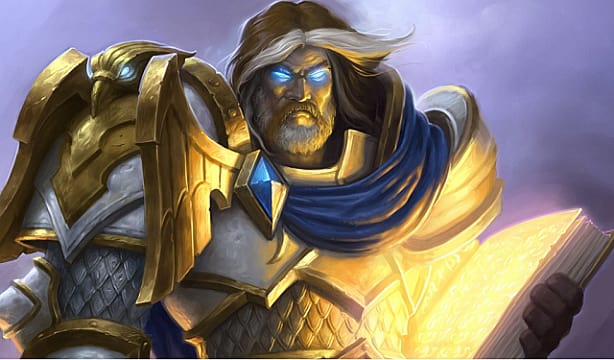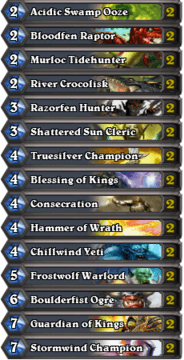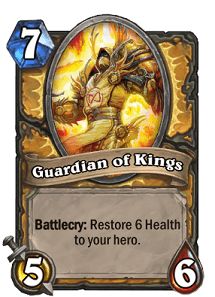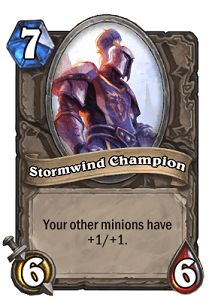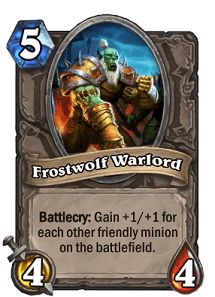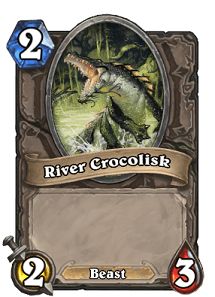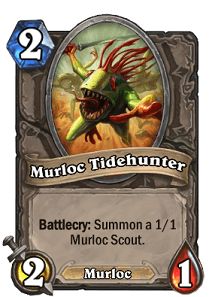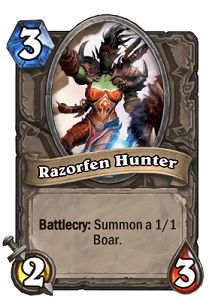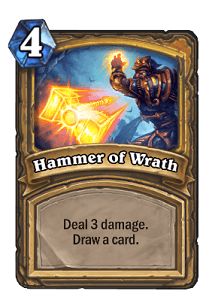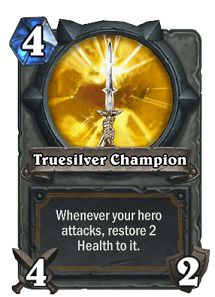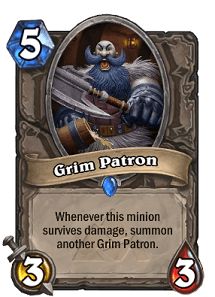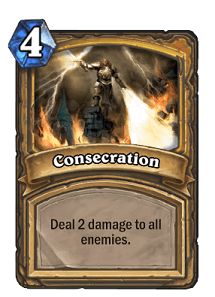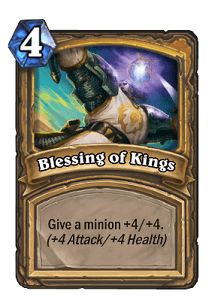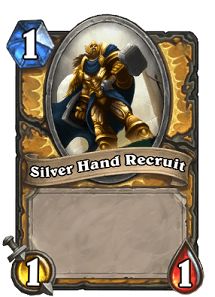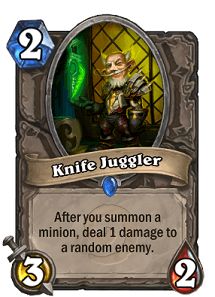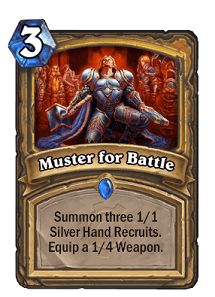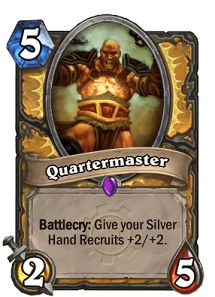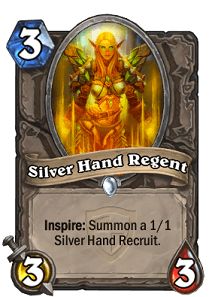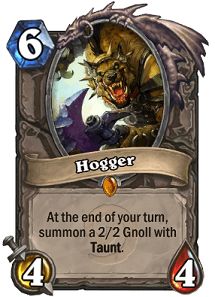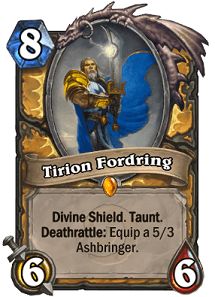The decklist this week comes from Sottle, a professional Hearthstone player. As usual, it assumes that you’ve reached level 10 as a paladin. This deck’s a bit of a different beast to the two we’ve seen so far, as it includes a weapon, Truesilver Champion – one of the best-value cards in the basic set.
What do you mean by value?
As a concept, value is related to trading – that is, how many of your opponent’s cards can you exchange for your own. Value itself refers to how a card’s stat distribution and abilities compare against its mana cost. The easiest way to assess this is through the “vanilla” test: is the ratio of stats to mana more or less than 2:1? This deck, like most, relies on getting a value advantage early and keeping it until you eventually overwhelm the opponent.
The Decklist
The basic paladin deck heavily preferences creatures over spells. Reinforce, the paladin’s hero power, works with this to make a deck that seeks to stay in the game until mid-to-late game, when a number of big hitters can be put into play. Its class cards mainly focus on efficient removal at lower levels.
Your goal is to lay down as many minions as possible in your early turns, as one of the win conditions of this deck is playing a buffed Frostwolf Warlord – which we’ll discuss in a little more detail later. You have a number of tools at your disposal when it comes to preserving your minions even though they’re not as ludicrously effective as a mage’s Flamestrike or Polymorph.
Minions
There are a few big guys for you to play with here, more so than the previous decks we’ve covered. Guardian of Kings is a paladin card that’s best played late in the game. His ability to restore 6 health to your hero can be enough to turn the tide in the late game, – it will let you survive a Kill Command or Fireball and fight another turn, while still playing a decently powerful minion. As well as this, the Stormwind Champion has great synergy with the goal of this deck: it buffs all your other minions with +1/+1, helping the weaker ones survive removal spells like Arcane Explosion.
While the Frostwolf Warlord has below average stats for its mana cost, it comes with an excellent battlecry: for each friendly minion on the board, it gains +1/+1. You’ll need a minimum of two minions present to make him an efficient play, but with one or no minions on the board, he still makes a better play than doing nothing.
At the lower end of the mana curve lurk a couple of minions who can summon other minions: the Murloc Tidehunter and Razorfen Hunter. Their minions are both 1/1 and are warm bodies, so to speak, but little else. A Shattered Sun Cleric can give one of them a little survivability, but they’re best kept out of trades until you can play the Frostwolf Warlord. The River Crocolisk is a 2/3 that can be boosted to have the same stats as a Bloodfist Ogre, but on turn four instead of turn six, by buffing it with a Blessing of Kings. It’s the marginally sturdier cousin of the Bloodfen Raptor.
Spells
There’s a great set of goodies waiting for you in this basic paladin deck. Hammer of Wrath does direct damage and lets you draw a card. It’s great in the mid-to-late game when you have the mana crystals free to potentially play what you’ve drawn, but also has its uses eliminating a threatening enemy who is otherwise protected by a Taunt.
Truesilver Champion, as mentioned earlier, also provides fantastic value. It restores 2 Health to you right before you attack with it, and the 4 damage per swing is the sweet spot for removing most minions under 4 mana – excluding outliers like the Oasis Snapjaw, Chillwind Yeti, and Sen’jin Shieldmasta. When you (inevitably) come up against a Warrior deck running cards like Grim Patron and Frothing Berserker, your Truesilver Champion is invaluable.
Insofar as board-clearing goes, you have Consecration. For 4 mana, it will do 2 damage to all enemies – the enemy hero included – and is great for dealing with other decks who rely on flooding the board. You’ll want to be on guard for it yourself, if you’re facing another paladin. As this deck has two included, don’t be afraid to play Consecration aggressively to remove a few small minions if you suspect that the other player is planning to drop something like a Frostwolf Warlord or Bloodlust. Blessing of Kings allows you to buff a minion with +4/+4. Your hero power, reinforce, provides you with a steady supply of 1/1s to play it on, even if your board is looking sparse. This gives you the opportunity to remove a stronger minion or perhaps even swing for lethal damage.
Upgrades
By no means is this a bad deck, but since paladins were the big winners of The Grand Tournament, there’s now plenty of ways to go when upgrading our basic paladin deck. Many of them make use of the newly introduced Inspire mechanic.
If you enjoy using the Frostwolf Warlord, then consider swapping out one or both of your Chillwind Yeti for a Dragonling Mechanic. For the same cost, it spreads 4/5 of stats across two cards – since the latter is a 2/1, this isn’t usually desirable outside of a deck centred around this card.
Once again, the Knife Juggler is a great outright upgrade to the Bloodfen Raptor. It has great synergy with both the paladin’s hero power and the amount of minion summoning inherent to this deck. Muster for Battle is an excellent card to use in tandem with your juggler, as it immediately summons three 1/1 recruits and hands you a weapon. Quartermaster is a rightfully popular card to play on the turn after it, turning your recruits into 3/3 minions. Also, you can’t go wrong with a Shielded Minibot.
Silver Hand Regent is a must-have for this deck, and builds upon the combo outlined in the previous paragraph. When inspired, it summons another 1/1 for you, keeping your damage output consistent. For this reason, however, you’ll find your opponents targeting this card frequently. Hogger is an interesting Legendary to run in this deck, with his ability to summon a 2/2 minion with taunt each turn. That very same mechanic makes him a high priority for silencing or outright removal, so you’ll rarely get full value from this card. If you’re saving your dust to craft a legendary, however, Tirion Fordring is hands down the best choice for a paladin.
In terms of augmenting your Hero Power, both the Fencing Coach and the Maiden of the Lake are excellent choices. The latter sets the cost of using your hero power to 1 outright, and therefore can’t be played multiple times to make your hero power free.
These are only a few ideas! There’s enough fantastic TGT cards that the shorter list would be cards not to consider including in this deck. Mysterious Challenger also opens the doors for a different type of deck: the secret paladin mentioned at the start of this guide.
Conclusion
The basic paladin deck is packed with cards that deliver and distribute value in interesting ways. Through experience, you’ll get a feel for when to play your summoning minions and when to hold back on them. While this deck won’t stand up to experienced players, it’s great for climbing the first few rungs of Hearthstone’s ranked ladder, and stands a chance against one of the most popular decks making the rounds right now – the dreaded Patron Warrior!
